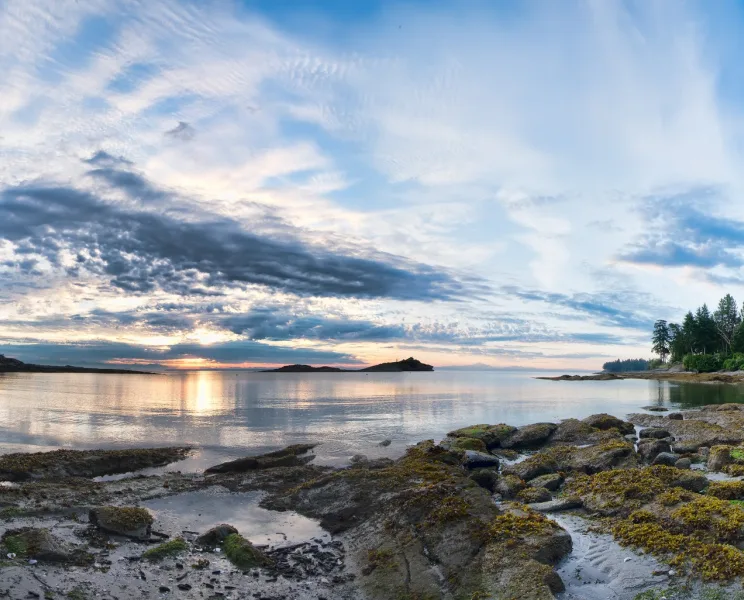For over 100 years, the North Salt Spring Waterworks District has supplied drinking water to parts of Salt Spring Island, British Columbia. Now, as climate change intensifies, bringing more frequent and severe droughts, the North Salt Spring Waterworks District (NSSWD) is making a groundbreaking move to secure its drinking water systems, finding a balance between new connections to support needed housing and emerging climate impacts on long-term water resiliency with expert guidance from the CRIS.
In January 2025, NSSWD approved a partial lift of its longstanding water connections moratorium on the Maxwell Lake system—originally introduced in 2014 in response to drought and infrastructure limitations. The decision followed months of community engagement and a science-based assessment of water supply reliability and system vulnerabilities.
In response to growing climate risks, the District is preparing to integrate its two existing water systems: Maxwell Lake and St. Mary Lake. While each had previously undergone its own climate risk assessment, the integration raised new questions about how future vulnerabilities—such as drought, wildfire, or slope erosion—might change under a combined system.
Through the CRIS program, NSSWD was matched with engineers from Stantec, a leading infrastructure consultancy, to complete a tailored Climate Hazard and Vulnerability Review. The resulting report outlined key risks and provided actionable recommendations to improve resilience across the water distribution network.
This proactive approach marks a critical turning point in safeguarding essential infrastructure as extreme weather events threaten resources across the country.
“This was a great opportunity for our organization to advance the climate readiness expectations of our Board,” said Mark Boysen, Chief Administrative Officer at NSSWD. “The results gave us clarity and a roadmap to prioritize investments and make the most of our limited resources and addressed a significant component of our climate adaptation priorities.”
The Salt Spring Island project is part of a broader trend across Canada, where local governments and utility providers are proactively planning infrastructure upgrades with climate in mind. As communities face increasing drought and aging infrastructure, resilient water systems are essential to protect public health and support future growth.
“The CRIS program offers hands-on, expert support at no cost to communities,” said Kiera Tsakonas, Portfolio Manager at the Canadian Urban Institute. “Having Stantec visit the island and understand its unique landscape meant the guidance NSSWD received was specific, practical, and aligned with existing local climate efforts.”
Is your community ready to build your resilience?
Register your infrastructure project to receive free expert support tailored to your specific challenges through the CRIS. Click here to learn how.





